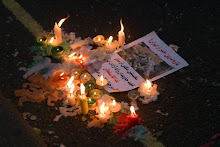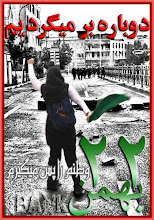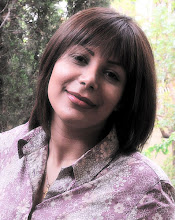



I didn’t expect to be assailed by the scent of lavender when I got to Origin, but I was – well it is a craft show after all - and a nice lady called Maxine Sutton has very obligingly, understood what craft is really about and made lavender bags and tea cosies, handsomely printed and sewn up like children’s sewing kits. They really are the business and the best bit is that the lavender bags have biologically in/accurate hearts printed on them. The heart design is the sort that shows valves and arteries but the shapes are traced in leaves in flowers. Brilliant!!
So Origin begins with a hint of the village flower show while being, unmistakably, a glitzy urban trade fair – a bit kitsch, a bit snazzy, a bit – well very naff at times – but proud. This is what works so well with this year’s selection, it seems much more certain of its own identity, much more confident than it has in the past. Industry is present but not dominant, it’s part of the process in conversation with the handmade or individually designed. This year’s ‘interventions’ use the ancient uber-craft discipline of basket weaving, - but this is post-modern basket-weaving, forget physiotherapy. I’ll write more about them next week, once they’ve had time to develop. Gone are the dark recesses containing ‘art’ as though it was something mildly unpleasant deposited under a lamp post. Origin, in short, has ‘come out.’
Jewellery, textiles of various sorts and ceramics dominate. There is a strong flavour of pink, lacy, girly feminine, - it’s a bit in yer face at times, splendidly tasteless, but a VERY welcome relief from the tedious thudding masculinity of ‘pure’ studio craft. Origin is altogether more promiscuous than it was: round the corner from the lavender you know there’ll be a bit of expensive cheap perfume. Someone made jewellery that looked like chocolates and presented then in pink sponge like fairy cakes. Ludicrous but very very effective.
Consistent with the extravagant cavorting of ceramics the other side of London, (in the Temple of the Applied Arts,) Sevres porcelain was a strong flavour in this year’s ceramics selection. Excessive, absurd, I’m not sure I really want to see it again, but it was fab just this once. See Kate McBride, Timea Sido,(second picture from top), and Jo Davies, for instance. At the extreme end of this is Jasmine Rowlandson – the Donatella Versace of UK ceramics. It looked tailor made for the Dubai market to me, but should do well here is she can reach the various diasporas to whom it will undoubtedly appeal.
This is not to say that ‘old fashioned’ studio ceramics has turned tail and fled. All of the above is ‘old fashioned studio ceramics.’ But somehow there’s more ceramic and less studio – its less noble peasant and bit more whorish – halleluja. A nice bit of anagama firing or similar would have provided a good contrast, but that kind of approach to making was conspicuous by its absence. It’s a relief not to see grizzly stoneware, but the swathes of pink gold and frills will pall very soon if its not balanced out with something a wee bit calmer. You cant live on marshmallows alone.
Chris Keenan, The Guardian Angel of Celadon Coated Tableware was there, representing ‘proper pottery,’ and also proving that celadon can still be tableware, it doesn’t have to be deconstructed to be desirable. Sue Nemeth’s Middle-European, folk-pottery inspired mould-cast porcelain, (picture top), brought all the strands together - very proper pottery, while also very pretty, feminine without being fetishistic, graceful, and very much her own vision.
Week one was seething with visitors within the first few hours of opening. That morning, Deborah Carre of Carreducker had received a Selvedge award. Now the presence of these shoemakers is something of a triumph. It’s a been a long time coming, The crafts Council, for decades, would have nothing to do with them. Not ‘pure’ enough apparently. But they, the CC, have now embraced design and collaborations with industry, so, with a bit persuasion from various people no doubt, shoemakers are at last allowed in. Carre’s stall looked magnificent. She had a case showing the tools of the trade as well as collections of beautiful hand made shoes. It was the proof positive of the confident, trade fair approach, a convincing exposition of craft as an industry in itself.






















































